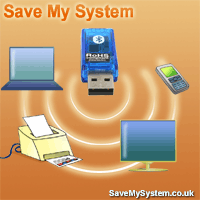In the office and home as technology makes them more reliable and cheaper cordless phones are becoming more common. Since the 1960s the technology for cordless phones has been around, however domestic models were first introduced in the 1980s.
The first cordless phones used an analogue signal between the handset and base so range and quality was not great. Also these original phones did tend to be quite large and had an aerial that extended out of the top. Another downside to the first cordless phones was that they were also very expensive too.
Cordless modern day phones are now all Digitally Enhanced Cordless Technology which stands for DECT. Basically this means cordless phones have instead of the old analogue signal a digital one. This gives enhanced range in which the phones can be used and clarity to the calls.
DECT phones at first costing nearly as much as 200 a time were very expensive at first. Nowadays DECT cordless phones however can be bought for as little as 15 a time.
The size that has reduced dramatically is another change that has happened to cordless phones. An extending aerial with huge battery compartments are things handsets no longer require.
BT, Panasonic and Siemens are just some of the cordless manufacturers who produce phones in a variety of features and shapes. Bluetooth handsets with wireless headset capabilities are now available and some models even being weatherproof.
As prices reduce and technology gets better many consumers can now purchase phones with extra cordless handsets included. These phones can then be located in other rooms around the home such as the living room and bedroom. Calls can then be made between the phones so people can communicate freely.
If you go into most peoples homes in fact you will very rarely find a corded phone in use. Cordless phones are the preferred choice and what the majority of people have converted too. A corded phone as back up in case of a power cut however is always wise.
The first cordless phones used an analogue signal between the handset and base so range and quality was not great. Also these original phones did tend to be quite large and had an aerial that extended out of the top. Another downside to the first cordless phones was that they were also very expensive too.
Cordless modern day phones are now all Digitally Enhanced Cordless Technology which stands for DECT. Basically this means cordless phones have instead of the old analogue signal a digital one. This gives enhanced range in which the phones can be used and clarity to the calls.
DECT phones at first costing nearly as much as 200 a time were very expensive at first. Nowadays DECT cordless phones however can be bought for as little as 15 a time.
The size that has reduced dramatically is another change that has happened to cordless phones. An extending aerial with huge battery compartments are things handsets no longer require.
BT, Panasonic and Siemens are just some of the cordless manufacturers who produce phones in a variety of features and shapes. Bluetooth handsets with wireless headset capabilities are now available and some models even being weatherproof.
As prices reduce and technology gets better many consumers can now purchase phones with extra cordless handsets included. These phones can then be located in other rooms around the home such as the living room and bedroom. Calls can then be made between the phones so people can communicate freely.
If you go into most peoples homes in fact you will very rarely find a corded phone in use. Cordless phones are the preferred choice and what the majority of people have converted too. A corded phone as back up in case of a power cut however is always wise.
About the Author:
Learn more about Cordless Phones. Stop by Rachel Snowdon's site where you can find out all about Phones and headests. Of note are the articles on a range of Polycom Conference Units

No comments:
Post a Comment